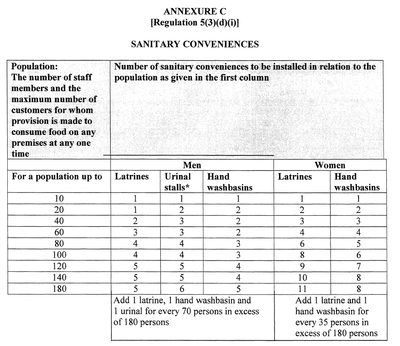You have a great recipe for rusks, you want to sell at the local flea market or perhaps you would like to become a home chef? Whatever your food business may be, our two part article explain the process into 10 actionable steps for you.
The fundamentals of food safety
Hopefully by now you have discovered that in order to manufacture food in South Africa or open a restaurant or coffee shop, you have to comply with the Hygiene regulation under the Foodstuffs Cosmetics and Disinfectants Act, Act 54 of 1972. Yes, the regulation used to be under the Health Act, but it was moved. Of course, it is still a matter of public health concern.
So what does regulation R962 – “Regulations governing general hygiene requirements for food premises and transport” actually say in plain English?

Join us for this Food Safety Fundamental webinar and find out more from the experts.

1. You must have a valid certificate of acceptability
You must apply for this certificate at your local department of environmental health. You should have this certificate before you start to trade. Try this link for the contact details: Department of Environmental Health
The best option is to actually go into the offices rather than call.
2. Your facility must look like a food facility
Not a scrapyard. It needs to be in an area that doesn’t pose a risk to the processes or the food handled. Open ground can lead to rodent infestation, dust from the neighbor can contaminate the product. If the environment is not ideal and you cannot move, you need to apply additional measures to keep the outside from becoming a problem on the inside.
The regulation puts the onus on you to protect food by the best available method against contamination or spoilage by poisonous or offensive gases, vapours, odours, smoke, soot deposits, dust, moisture, insects or other vectors, or by any other physical, chemical or biological contamination or pollution or by any other agent whatsoever.
The design of a food facility must also be conducive to easy cleaning. The regulation uses the words, smooth, easy to clean, non-porous when describing walls, ceilings and floors. Be careful with tiles as the grout may be porous.
The facility must be adequately ventilated to remove the build-up of steam. Any cooking appliances will require extraction hoods. Lighting must also be sufficient. In both cases the national building regulations apply. Kitchens for restaurants must also be of a minimum size for the number of patrons. If you are changing the building or designing a new one – make sure your plans are approved first.
Your facility must also be pest-proof – flies and rodents are specifically mentioned. This means keeping them out so there should be no open windows unless these are screened, grates on drains and no opening in walls. Rubber strips on the bottom of doors will further discourage rodents.
Your wastewater system must be approved by the EHP. Fat traps should be installed.
There must be a wash-up facility for cleaning purposes. NOTE! This is NOT the handwash basin.
3. Enough toilets and handwash basins
You will need to provide the right number of toilets for the employees and the patrons if you have a restaurant. The regulation provides a table with the number of toilets you will need.
Each bathroom must have running hot and cold water, soap – always use liquid soap and a means to dry hands.
Rather use paper towels or adequately powered hot air dryers. Make sure there is a waste bin too. The occupational health and safety act regulations also require you to provide sanitary bins in ladies' toilets.
The toilets cannot open directly onto the restaurant or the kitchen/food preparation areas. There must be a lobby/double door configuration at least.
Toilets should obviously be cleaner very regularly and preferably not by kitchen staff. NOTE! There still have to be more handwash basins in the food preparation areas.

4. A place for everything and everything in its place
There should be enough space for all activities in your process. There should be storage areas for food that are separate from storage areas for food and ingredients. Ideally, you should keep raw food and any cooked/heat-processed products separately.
There must be a specifically designated area for waste containers.
There must be a place for staff to change and store their personal clothing away from food handling activities. Staff should not change in the toilets.
5. The right tools for the job
All the equipment used in a food handling facility must be fit-for-purpose. You have to consider that items will be used repeatedly so domestic equipment will not last. Rather spend the money and invest in industrial equipment.
Any surface that is in contact with food must not be a source of contamination so these surfaces should be smooth, rust-proof, non-toxic and non-absorbent material that is easy to clean. Wooden chopping boards are not ideal.
Crockery, cutlery and any other utensils must not be chipped or cracked and must be cleaned before used.
The first part of our article has discussed how your food facility should be built, part 2 will tackle the practices you will need to enforce to handle food hygienically.
Note R962 has now been replaced with R638 view more






